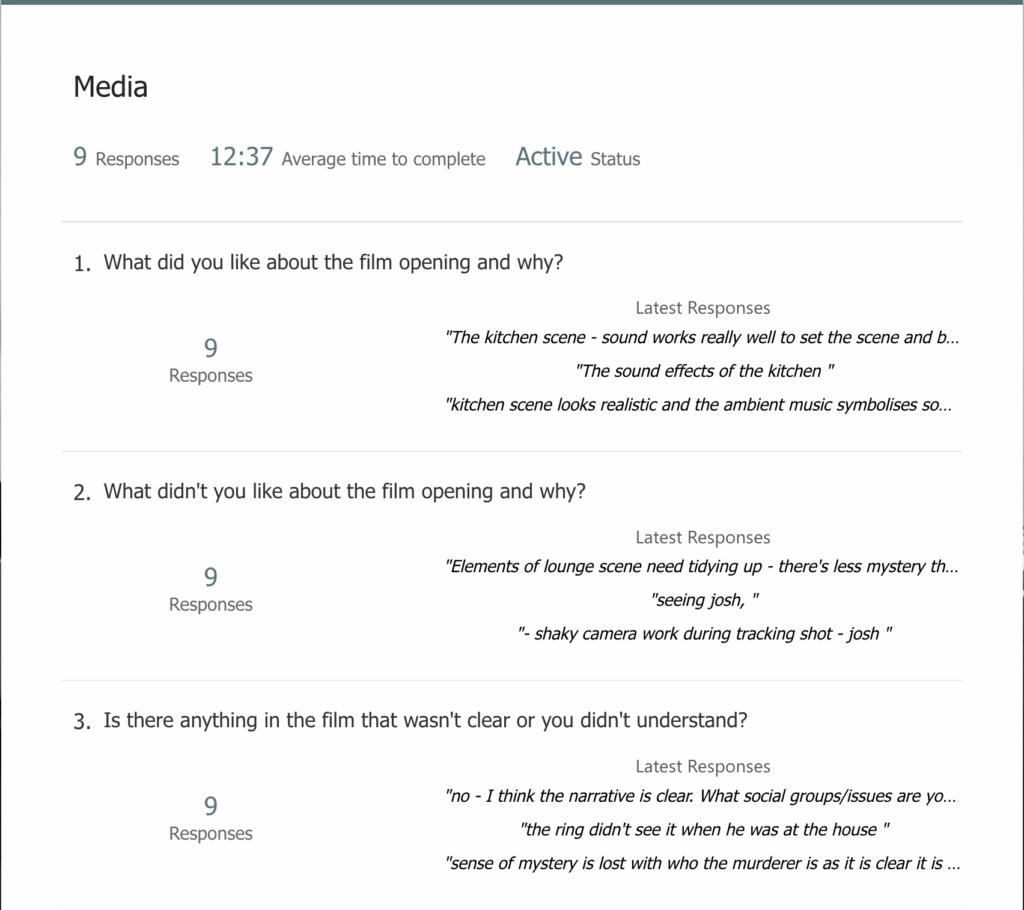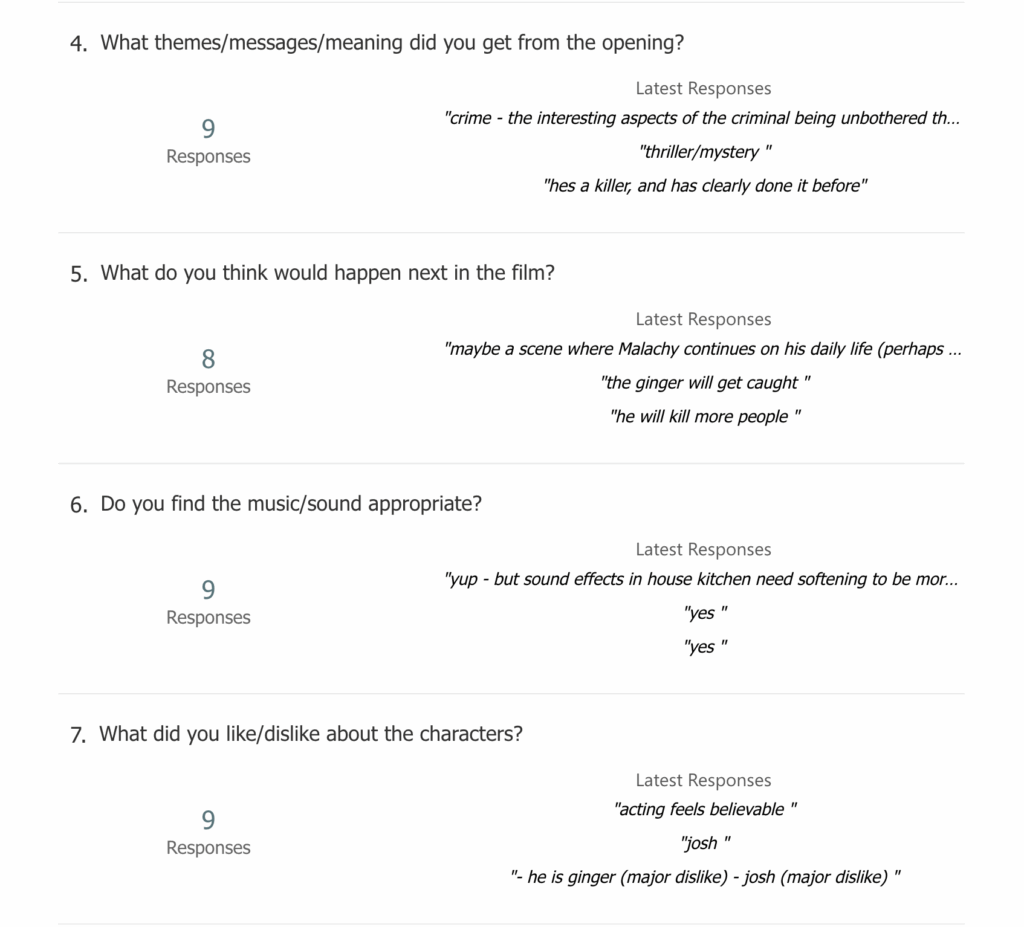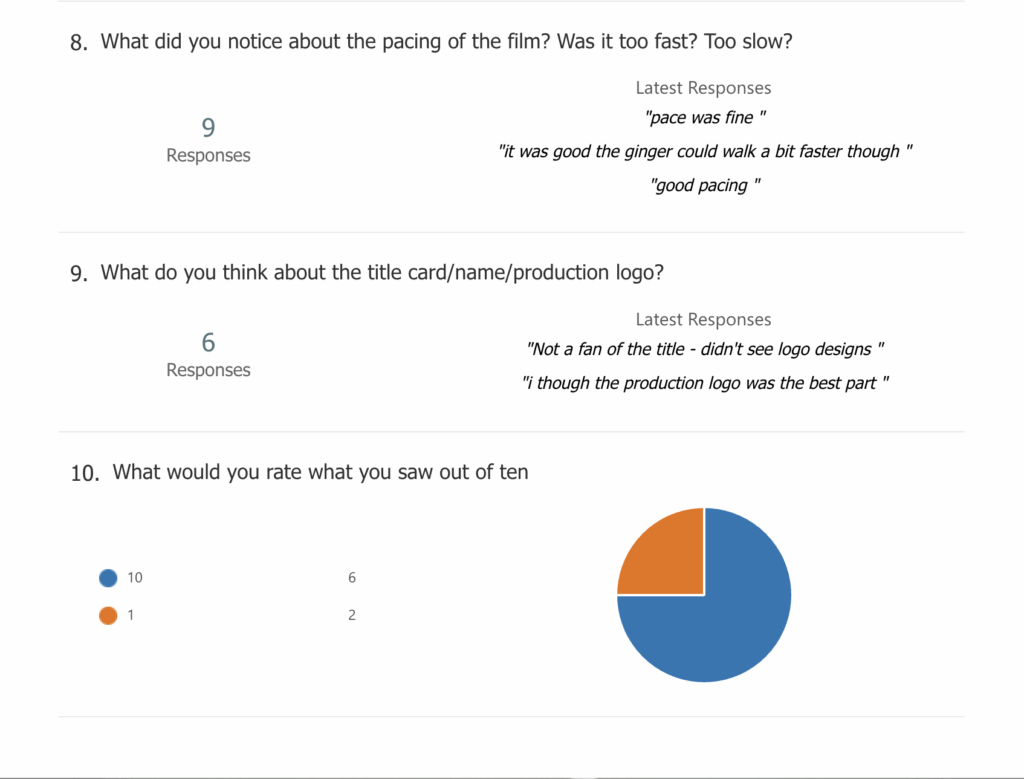Planning for Production – Idea generation and brainstorming
This week, we were placed into our coursework groups and began exploring potential themes, narratives, and ideas for our film opening. So far, we’re leaning toward creating a Thriller centered around an evil chef who is behind a string of mysterious disappearances using his victims as ingredients in his restaurant. During our brainstorming sessions, developing the story came naturally, as Madi and I both enjoy storytelling and are quite creative. However, I struggled to find visual inspiration that matched the tone we were aiming for, as nothing quite captured the vibe we envisioned. I also found scriptwriting challenging, as the initial draft felt too long and required multiple rounds of editing to refine.
Original Brainstorm and Story Ideas
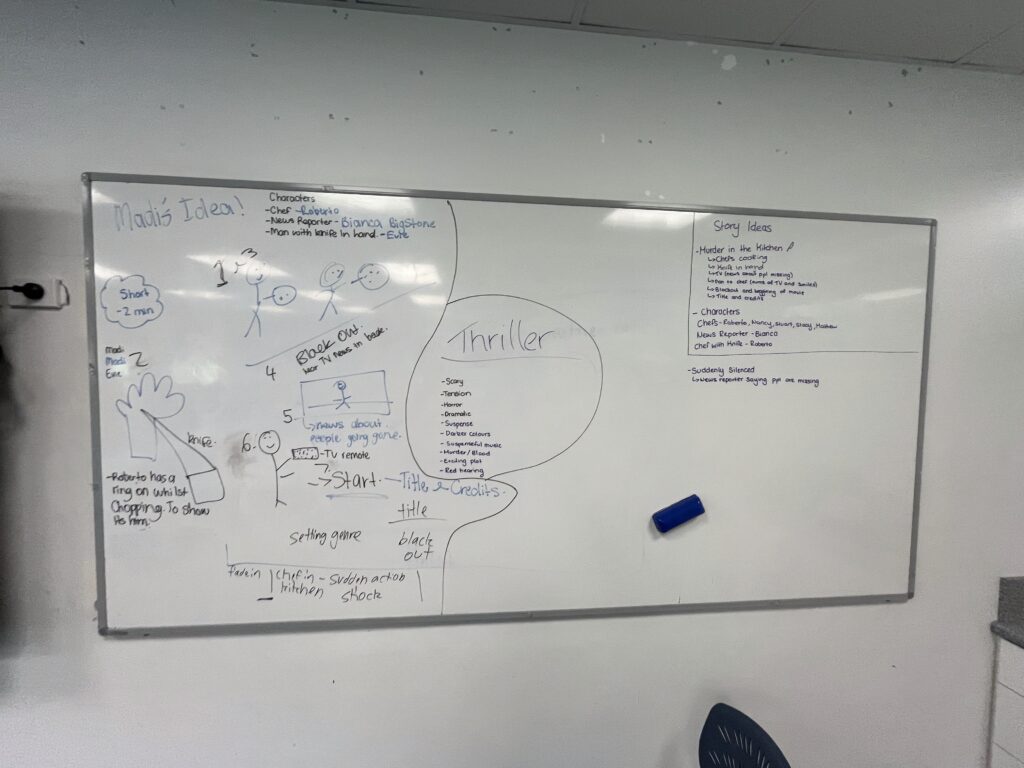
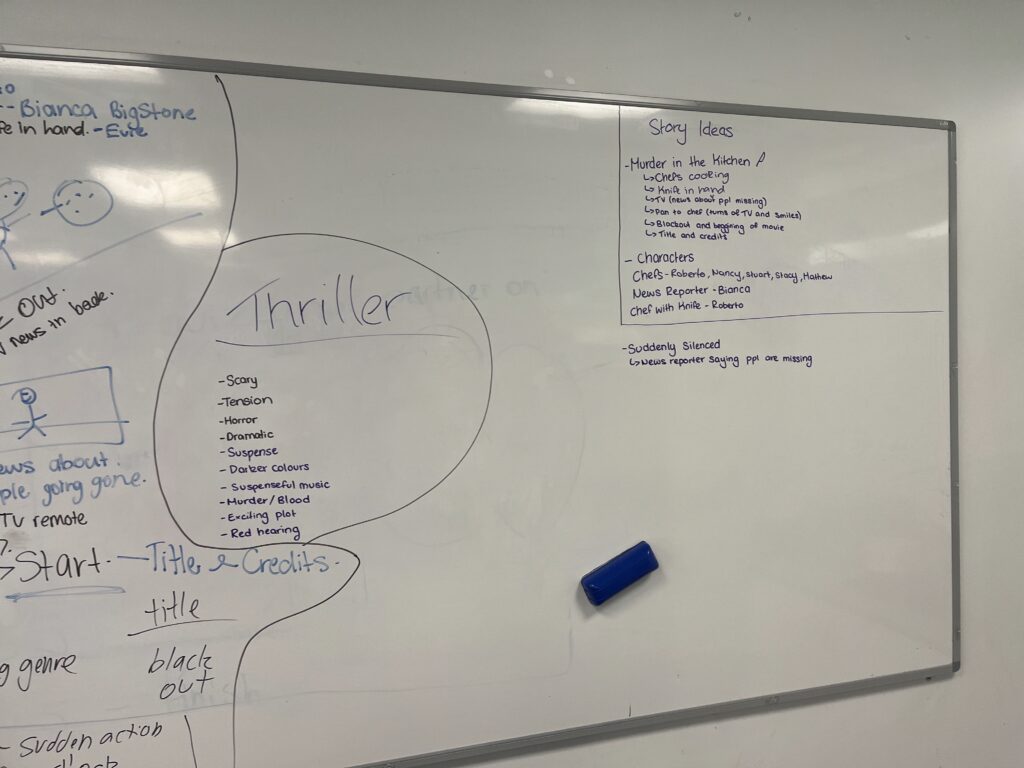
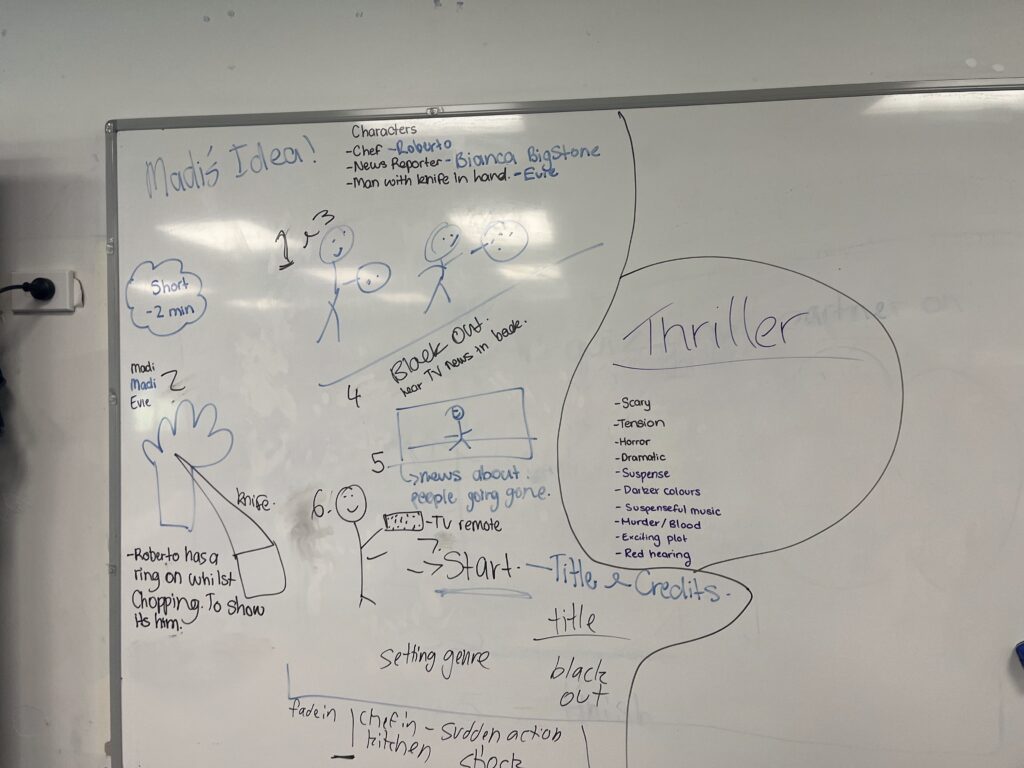
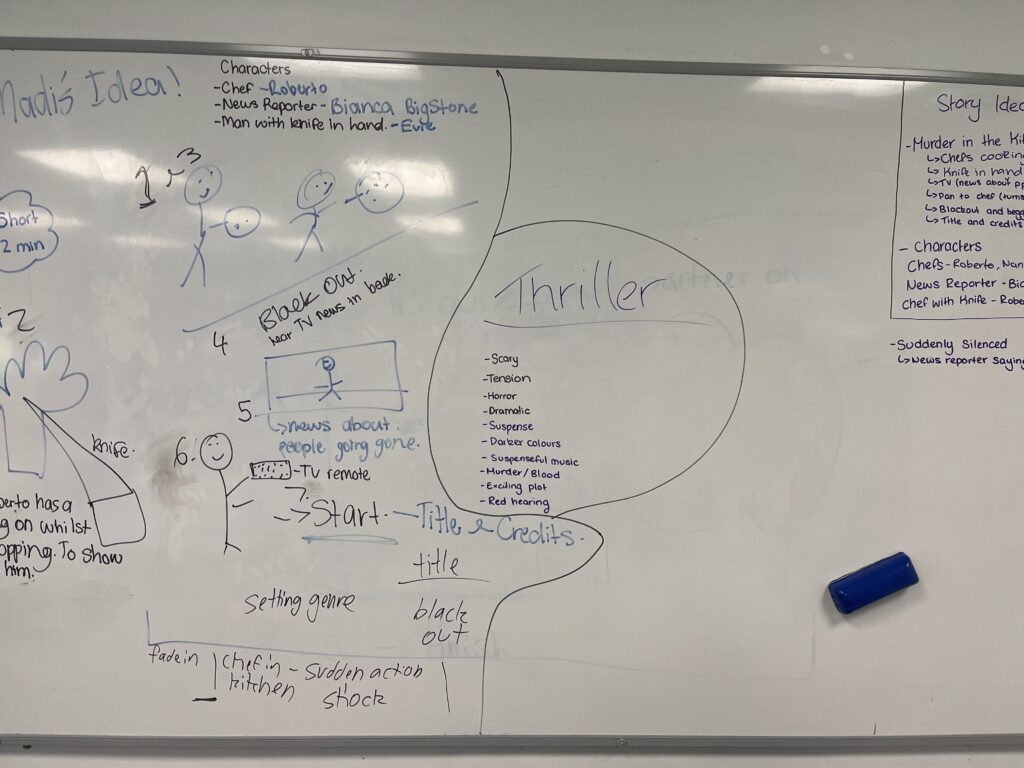
Planning for Production – Mood Board
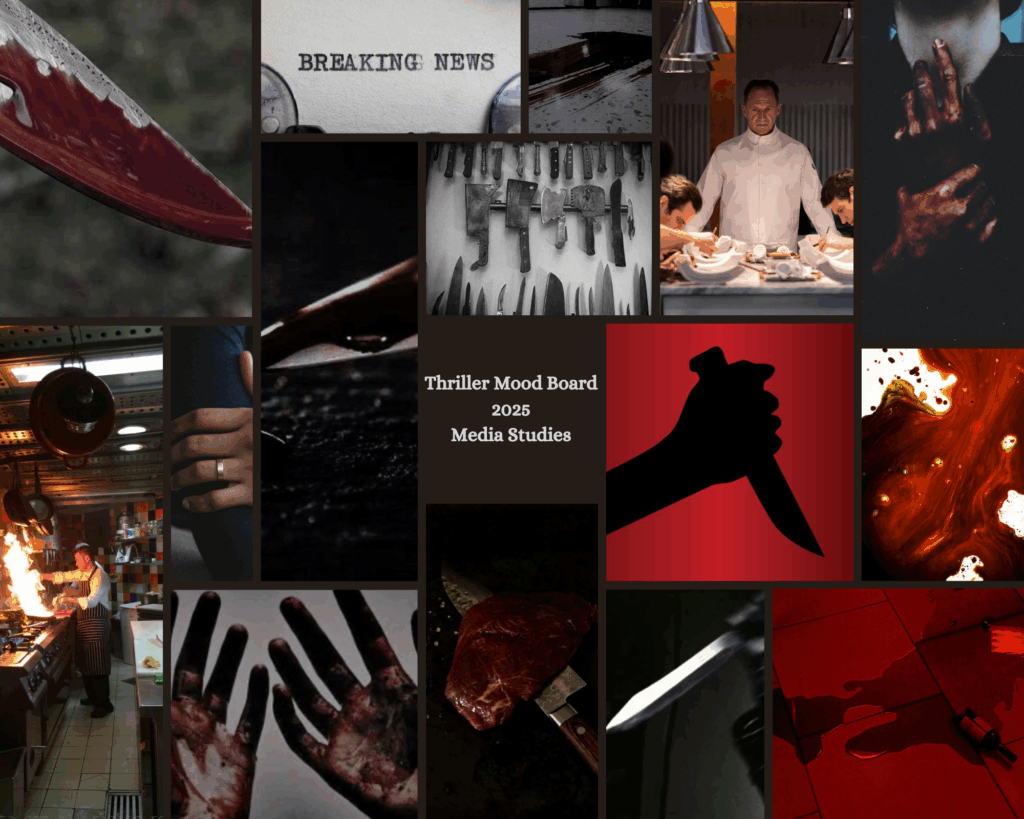
This Thriller Mood Board was created by Evie (me) four group’s idea for a psychological thriller set in a fancy restaurant where things aren’t as perfect as they seem. The dark colors like red and black represent blood, danger, and mystery, while the kitchen tools and food hint at something violent hiding behind the scenes. Pictures of knives, fire, and bloody hands help create a creepy and intense mood. We also included a serious-looking chef to show that someone in control might actually be part of the problem. Overall, the mood board shows how something that looks fancy can actually be really dark underneath.
Planning for Production – roles and responsibilities.
Today in class, our group worked together to discuss and assign key roles as we start preparing to create our film opening. It was decided that I would take the lead on script writing, the mood board, and gathering intro inspiration. I also worked with the rest of the group on developing the storyline, brainstorming ideas, casting, and choosing locations. I was given these roles because I’ve been involved in drama for years and have experience with script writing. I also enjoy working closely with my group—I like being part of the creative process and stepping up when things get tricky, which is why I wanted to be involved in as much as possible. My first step has been researching thriller film openings to find inspiration and get a clear idea of the style we want. To do this well, I need to watch a variety of thriller openings and pick out the best elements that could influence our film. At the same time, I’ve been helping Madi by writing out the ideas she draws so we can build a clearer timeline for our opening. For the script, I wrote an original draft and timed it—it came out to 53 seconds, which was too long for our News Reporter scene. So I now need to go back, revise it, and manage to cut it down a shorter time to fit better with our plan.
Evidence of my Roles
This is the Original Script
Production – evidence
Here is my groups production preparation to date. The highlights of our project so far have been working together on improving the storyline, choosing our cast. However, some aspects have been challenging such as deciding times to film and what location fits our ideas the best.
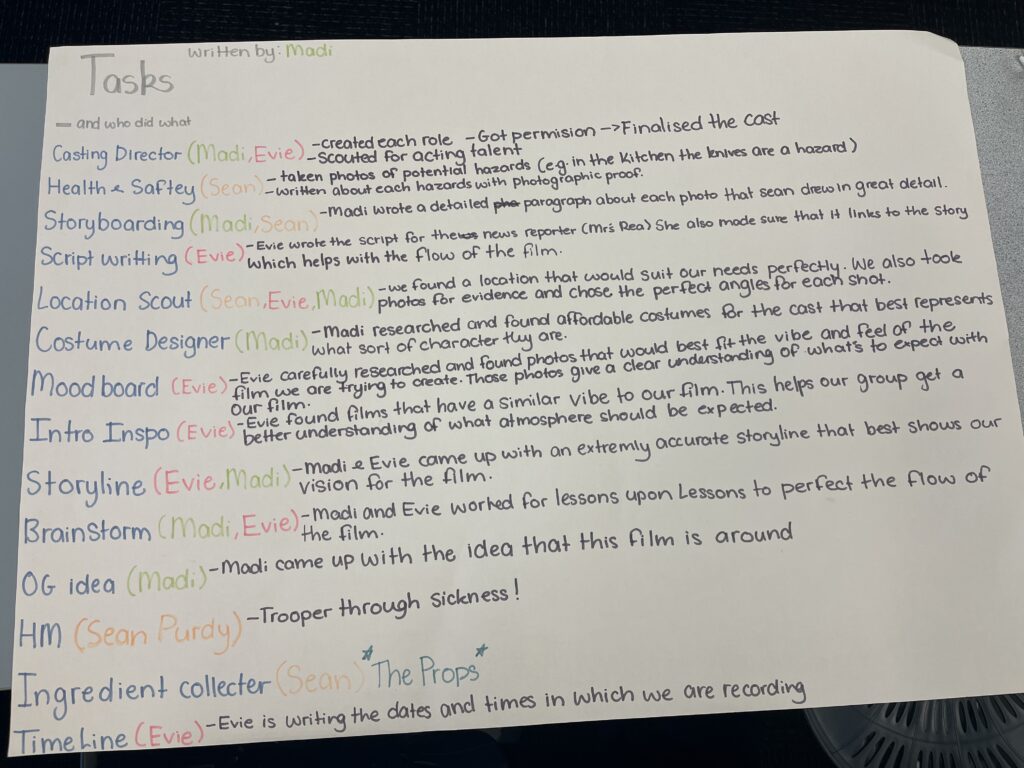
Production Process
At this stage of our production process, we’re focusing on finalising the filming locations to match the mood and tone of our thriller. We’re also locking in the final version of our script, making sure every scene is tight and purposeful. At the same time, we’re organising the actors, confirming availability, and making sure everyone is clear on their roles and schedules. We’ve also started planning the shots — including deciding on the camera angles and movements we want to use to build suspense and tension in key scenes. All of this pre-production work is essential to make sure everything runs smoothly when we start filming.
On the right is the pdf of the final script, something I worked on in the final stages before filming (I also organised and decided what camera angles we wanted for our final film)
Filming
During our filming process, we successfully captured our main scenes and worked well as a team to bring the vision of our thriller to life. However, one of the biggest challenges we faced was that we didn’t plan ahead as much as we should have. This meant that later on, we realised there were certain shots or moments we wished we had filmed differently but by then, we weren’t able to go back and re-film some of them. Another challenge we faced was realising we didn’t have quite enough footage to fully develop the storyline and meet the required length, so we had to film some extra parts later on to add more depth and suspense. It taught us how important detailed planning and time management are, especially when working to a deadline. We also had to film extra parts to make the story longer and clearer, which helped add more suspense and fill in gaps. In post-production, we’ll be fixing up the lighting and adding sound effects and music to create tension and improve the overall atmosphere. Personally, I was involved in setting up scenes, helping with camera angles, and making sure the actors knew what to do in each shot. This process has shown me how much thought goes into every stage of production and how important it is to stay organised.
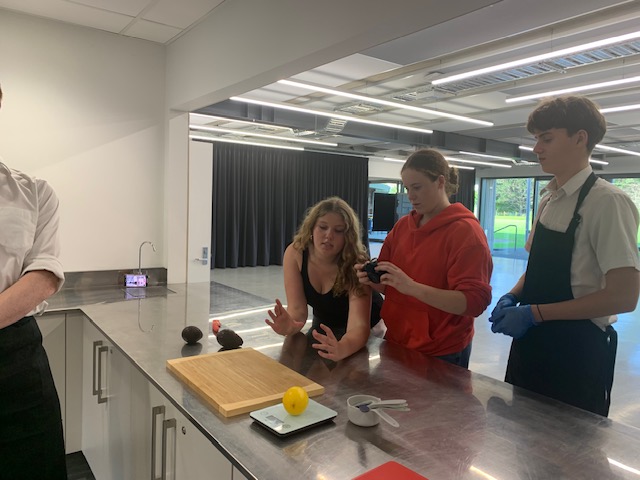
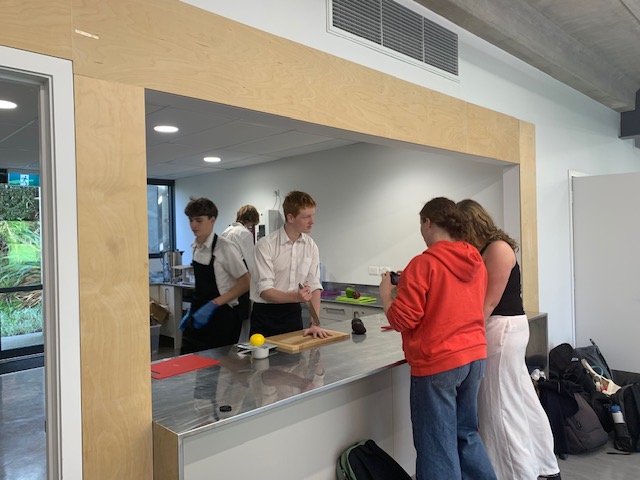
Rough cuts review
In class, we presented the opening scenes of our film to our classmates as part of a rough cut screening. We explained the plot, characters, and overall theme to provide context. Our main aim was to get feedback on how clearly the story was coming across, how effective the thriller elements were in the opening, and whether the pacing and characters were engaging.
The feedback highlighted several areas that need improvement. While some viewers found the concept interesting and were curious about the mysterious “chef” character, many felt that the opening lacked and had lost it’s suspense and tension. A few said it was hard to feel drawn in because the suspense didn’t build enough, and the pacing felt too slow to match the tone of a thriller. This for us was a huge turning point as we wanted our piece to have large levels of suspense.
Based on this feedback, it’s clear that we need to rethink how we’re building tension from the very beginning. Our next steps will be to revise the pacing and possibly restructure the opening to introduce more mystery or threat earlier on. Smoothing out scene transitions will also be a priority to ensure the story feels more coherent and engaging for the audience.
First Edit Review (Feedback from class):
Second Edit Review (Feedback from teacher)
1st Rough Edit
2nd Edit
Student Responses: Microsoft Form
